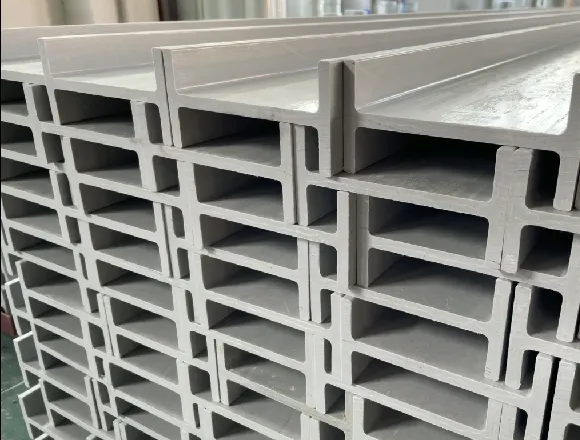loading...
- No. 9, Xingyuan South Street, Dongwaihuan Road, Zaoqiang County, Hengshui, Hebei, China
- admin@zjcomposites.com
- +86 15097380338
- Welcome to visit our website!
fibre reinforced plastic tanks
The Emerging Role of Fibre Reinforced Plastic Tanks in Modern Industries
Fibre Reinforced Plastic (FRP) tanks have emerged as a revolutionary solution in various industries, providing unique advantages over traditional materials such as metal and concrete. As industrial processes evolve, the demand for lightweight, durable, and corrosion-resistant containers has led to the increased adoption of FRP technology. This article explores the key benefits, applications, and future trends related to FRP tanks.
Understanding Fibre Reinforced Plastic
Fibre Reinforced Plastic is a composite material made from a polymer matrix reinforced with fibres, typically glass, carbon, or aramid. This distinctive composition allows FRP to offer superior strength-to-weight ratios, making it an ideal material for constructing tanks. The integration of fibres into the plastic matrix not only enhances mechanical properties but also improves thermal and chemical resistance, making FRP tanks suitable for a variety of applications.
Advantages of FRP Tanks
1. Corrosion Resistance One of the most significant benefits of FRP tanks is their exceptional resistance to corrosion. Unlike steel or concrete, which can deteriorate when exposed to harsh chemicals or environmental conditions, FRP tanks maintain their integrity over time. This property is particularly advantageous in industries such as chemical processing, water treatment, and waste management, where exposure to aggressive substances is common.
2. Lightweight and Flexible The lightweight nature of FRP tanks facilitates easy transportation, installation, and maintenance. Their flexibility in design allows for custom shapes and sizes, accommodating specific project requirements. This adaptability ensures that industries can maximize space efficiency while minimizing the structural load on supporting frameworks.
3. Durability and Longevity FRP tanks possess high durability, with a lifespan that often exceeds that of traditional materials. Resistance to UV radiation and environmental factors means that these tanks remain functional and visually appealing for extended periods. Businesses investing in FRP tanks can benefit from reduced replacement and maintenance costs, leading to improved operational efficiency.
fibre reinforced plastic tanks

4. Thermal Insulation FRP has excellent thermal insulation properties, which can be crucial for temperature-sensitive applications. This helps in reducing energy costs associated with heating or cooling the contents of the tank, making FRP tanks not only economical but also environmentally friendly.
Applications of FRP Tanks
FRP tanks are used across various sectors due to their versatile properties. In the chemical industry, they are deployed for storage and processing of volatile substances without the risk of contamination or leakage. In the water and wastewater sector, FRP tanks serve as storage for treated water and as components of treatment systems. Additionally, the food and beverage industry benefits from FRP tanks for the storage of liquids, as their non-reactive nature ensures product purity.
Future Trends
As sustainability becomes a critical concern for industries worldwide, the demand for eco-friendly materials like FRP is expected to rise. Innovations in manufacturing processes, such as the integration of recycled materials and the development of bio-based resins, are likely to drive the market forward. Furthermore, as industries seek to reduce their carbon footprints, FRP tanks present an attractive solution due to their long lifespan and lower energy requirements during usage.
Additionally, advancements in smart technologies could lead to the incorporation of sensors and monitoring systems within FRP tanks, enhancing operational efficiency and safety. This integration will allow for real-time monitoring of tank conditions, alerting operators to potential issues before they escalate, thus ensuring safer and more efficient operations.
Conclusion
Fibre Reinforced Plastic tanks are redefining standards in storage solutions across various sectors. With their unmatched combination of strength, longevity, and resistance to environmental challenges, FRP tanks are not just a trend but a long-term solution that addresses the evolving needs of modern industries. As technological advancements continue to emerge, the versatility and sustainability of FRP tanks will undoubtedly secure their position as a preferred choice for future industrial applications.
-
The Rise of FRP Profiles: Strong, Lightweight, and Built to LastNewsJul.14,2025
-
SMC Panel Tanks: A Modern Water Storage Solution for All EnvironmentsNewsJul.14,2025
-
GRP Grating: A Modern Solution for Safe and Durable Access SystemsNewsJul.14,2025
-
Galvanized Steel Water Tanks: Durable, Reliable, and Ready for UseNewsJul.14,2025
-
FRP Mini Mesh Grating: The Safer, Smarter Flooring SolutionNewsJul.14,2025
-
Exploring FRP Vessels: Durable Solutions for Modern Fluid HandlingNewsJul.14,2025
-
GRP Structures: The Future of Lightweight, High-Performance EngineeringNewsJun.20,2025
